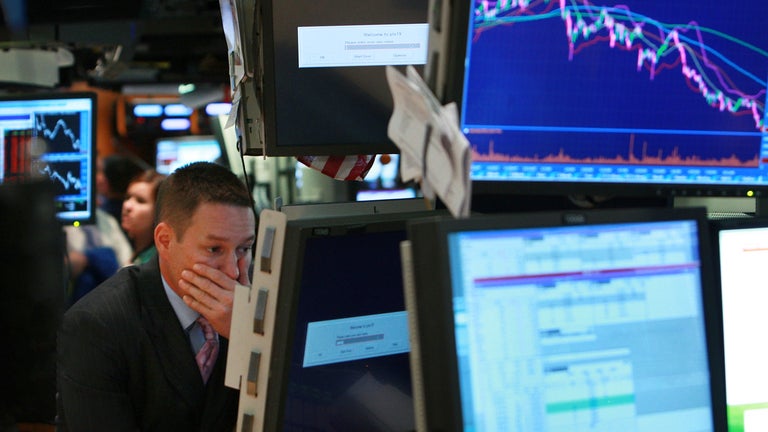Today
20
in History
25
January
February
March
April
May
June
July
August
September
October
November
December
01
Wed
02
Thu
03
Fri
04
Sat
05
Sun
06
Mon
07
Tue
08
Wed
09
Thu
10
Fri
11
Sat
12
Sun
13
Mon
14
Tue
15
Wed
16
Thu
17
Fri
18
Sat
19
Sun
20
Mon
21
Tue
22
Wed
23
Thu
24
Fri
25
Sat
26
Sun
27
Mon
28
Tue
29
Wed
30
Thu
31
Fri
...
10-19-1987
Stock markets have the largest‑ever one‑day crash on “Black Monday”

The largest-ever one-day percentage decline in the Dow Jones Industrial Average comes not in 1929 but on October 19, 1987. As a number of unrelated events conspired to tank global markets, the Dow dropped 508 points—22.6 percent—in a panic that foreshadowed larger systemic issues.
Confidence on Wall Street had grown throughout the 1980s as the economy pulled out of a slump and President Ronald Reagan implemented business-friendly policies. In October 1987, however, indicators began to suggest that the bull market of the last five years was coming to an end. The government reported a surprisingly large trade deficit, precipitating a decline in the U.S. Dollar. Congress revealed it was considering closing tax loopholes for corporate mergers, worrying investors who were used to loose regulation.
As these concerns grew, Iran attacked two oil tankers off of Kuwait and a freak storm paralyzed England, closing British markets early on the Friday before the crash. The following Monday, U.S. investors awoke to news of turmoil in Asian and European markets, and the Dow began to tumble.
Further compounding the crash was the practice of program trading, the programming of computers to automatically execute trades under certain conditions. Once the rush to sell began, matters were quite literally out of traders’ hands and machines escalated the damage to the market.
Despite looking like the beginning of another Great Depression—the L.A. Times’ headline read “Bedlam on Wall St.” while the New York Daily News’ simply read “PANIC!,” Black Monday has been largely forgotten by Americans not versed in financial history. As it would again in 2008, the federal government took a number of measures to “correct” the market, resulting in immediate gains over the next few weeks. By 1989, the market appeared to have made a full recovery.
Some now interpret the events surrounding Black Monday as proof that boom-and-bust cycles are natural and healthy aspects of modern economics, while others believe it was a missed opportunity to examine and regulate the kind of risky behaviors that led to the crash of 2008.
More news today
loading...